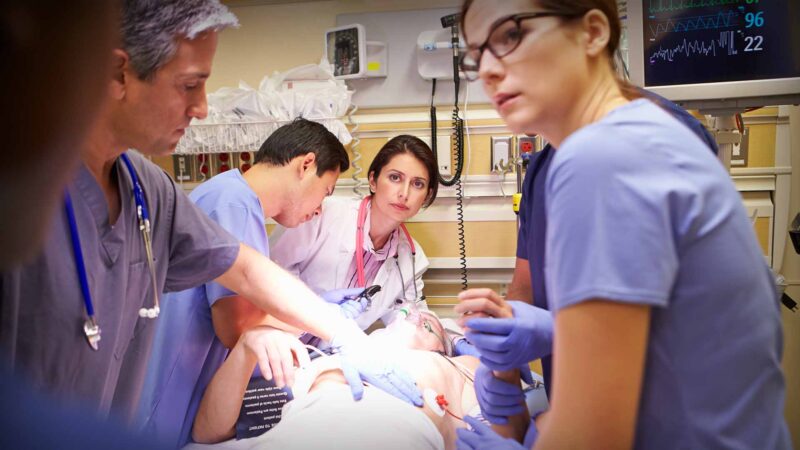Health Career Pathways
How I became an Emergency Physician
with Dr Kim Hansen
Dr Kim Hansen was initially attracted to emergency medicine because of its dynamic and chaotic environment. She enjoyed organising the chaos of the emergency department and working with a variety of patients, from newborn babies to centenarians. Dr Hansen found it fulfilling to help people get better or provide them with assistance and guidance when they couldn’t be cured. The unpredictability of the work was also part of the appeal, and she dedicated herself to developing the skills required to be a good emergency doctor.
To prepare for this role, the Dr Hansen worked in various specialties, including intensive care, paediatrics, anaesthesiology, general medicine, and infectious diseases. She also served as a board member and Chair for the Emergency Medicine Foundation and contributed to the Australasian College for Emergency Medicine in numerous ways, such as advancing women in emergency medicine and promoting patient safety and quality.
Dr Hansen acknowledges that emergency medicine can be a challenging field, as it involves shift work and can be emotionally taxing. However, she remains passionate about what she does to continue to contribute to her department, hospital, and the broader field of emergency medicine. Dr Hansen encourages medical students and junior doctors who enjoy working in a fast-paced, unpredictable environment to consider emergency medicine as a career.
Reflecting on her experience and career pathway, emergency medicine offers a broad range of opportunities, from working in a hospital emergency department to pre-hospital care, retrieval coordination, virtual healthcare, and other specialties such as intensive care, palliative care, or sports medicine. Dr Hansen sees emergency physicians as a cohesive group who support each other and enjoy each other’s company, and the field offers great mobility and work-life balance.
You Might also like
-
Understanding extracellular vesicles in cancer therapy research
Joy Wolfram is an Associate Professor at the Australian Institute for Bioengineering and Nanotechnology and the School of Chemical Engineering at the University of Queensland in Australia. Originally from Finland, she earned both her bachelor’s and master’s degrees in biology before transitioning to engineering with a PhD in nanotechnology completed in China. Wolfram has over a decade of experience working in hospitals in the United States before joining the University of Queensland.
Her research focuses on extracellular vesicles, which are crucial for cell communication both locally within tissues and over longer distances between organs. Her lab studies the roles of these vesicles in both health and disease, particularly in cancer. They investigate the harmful messages released by cancer cells that aid in tumour growth, specifically in breast cancer, while also exploring how to harness beneficial extracellular vesicles from healthy individuals as potential therapeutics.
-
The role of genomic screening in transforming public health
Dr Jane Tiller is a lawyer, genetic counsellor and public health researcher. She is Ethical, Legal & Social Adviser in Public Health Genomics at Monash University, and a National Health and Medical Research Council Investigator Grant holder. Jane is passionate about the use of genomics to prevent disease, and in delivering equitable access to preventive genetic information at the population level. She is co-lead of DNA Screen, a world-first study piloting the offer of preventive DNA screening to the Australian adult population. DNA Screen has tested over 10,000 young people for genetic high risk of medically actionable conditions such as cancer and heart disease, finding about 2% of participants had genetic high risk. Jane is leading efforts to secure Commonwealth Government funding to expand the DNA Screen program, with the eventual goal of the development of a public health population screening program for disease prevention based on high genetic risk.
-
Landmark research projects tackle critical issues in emergency healthcare
For two decades, the demand for emergency department services in Australia has outpaced population growth and wait times have increased. In 2022-2023 more than 8.8 million emergency department presentations occurred nationwide.
While demand is a contributing factor, EDs are currently being impacted by various factors across the entire health system.
The Emergency Medicine Foundation (EMF) is a non-profit organisation funding innovative Australian research that improves the way people are cared for in a medical emergency. The aim of the research is to deliver better and more effective health services to save lives and money.



